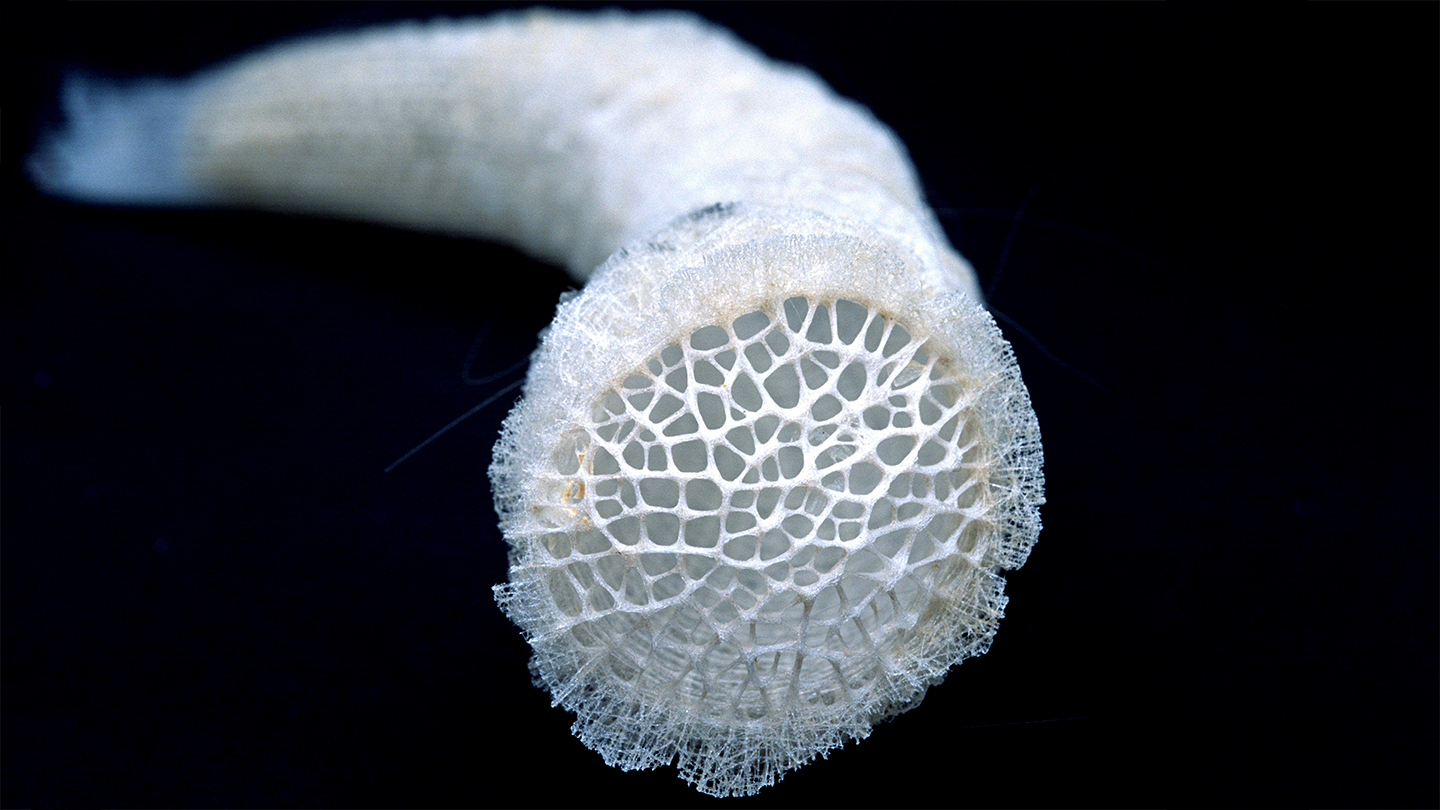A Venus’s-flower-basket isn’t all show. This stunning deep-sea sponge can also alter the flow of seawater in surprising ways.
A lacy, barrel-shaped chamber forms the sponge’s glassy skeleton. Flow simulations reveal how this intricate structure alters the way water moves around and through the sponge, helping it endure unforgiving ocean currents and perhaps feed and reproduce, researchers report online July 21 in Nature.
Previous studies have found that the gridlike construction of a Venus’s-flower-basket (Euplectella aspergillum) is strong and flexible. “But no one has ever tried to see if these beautiful structures have fluid-dynamic properties,” says mechanical engineer Giacomo Falcucci of Tor Vergata University of Rome.
Harnessing supercomputers, Falcucci and colleagues simulated how water flows around and through the sponge’s body, with and without different skeletal components such as the sponge’s myriad pores. If the sponge were a solid cylinder, water flowing past would form a turbulent wake immediately downstream that could jostle the creature, Falcucci says. Instead water flows through and around the highly porous Venus’s-flower-basket and forms a gentle zone of water that flanks the sponge and displaces turbulence downstream, the team found. That way, the sponge’s body endures less stress.
Ridges that spiral around the outside of the sponge’s skeleton also somehow cause water to slow and swirl inside the structure, the simulations showed. As a result, food and reproductive cells that drift into the sponge would become trapped for up to twice as long as in the same sponge without ridges. That lingering could help the filter feeders catch more plankton. And because Venus’s-flower-baskets can reproduce sexually, it could also enhance the chances that free-floating sperm encounter eggs, the researchers say.
It’s amazing that such beauty could be so functional, Falcucci says. The sponge’s flow-altering abilities, he says, might help inspire taller, more wind-resistant skyscrapers.
For all the latest Science News Click Here
For the latest news and updates, follow us on Google News.

